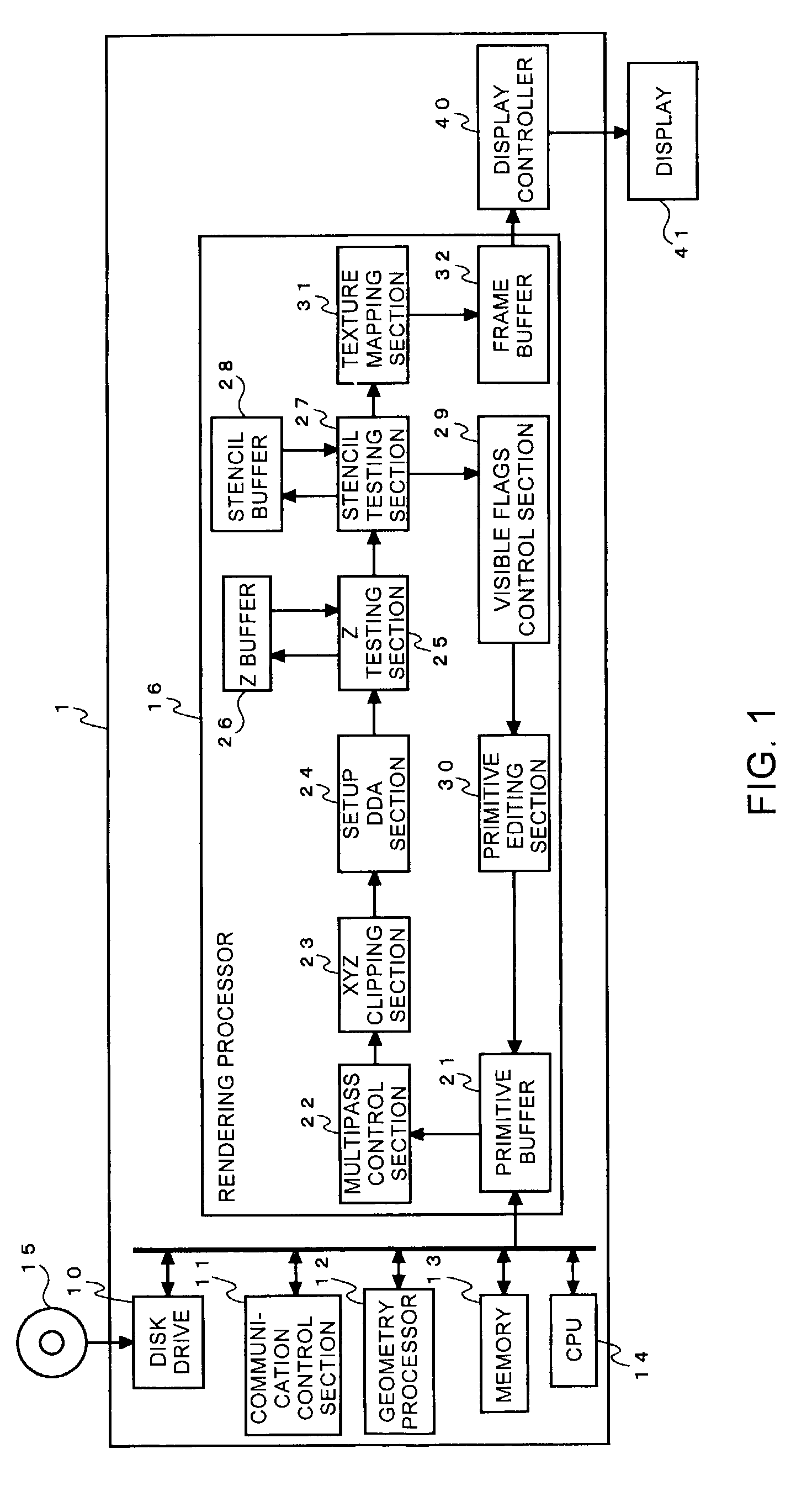Image processor, components thereof, and rendering method
- Summary
- Abstract
- Description
- Claims
- Application Information
AI Technical Summary
Benefits of technology
Problems solved by technology
Method used
Image
Examples
Embodiment Construction
[0053]An embodiment is described in which the present invention is applied to an image processor that supports multipass rendering.
[0054]FIG. 1 shows a hardware configuration of an image processor according to this embodiment.
[0055]An image processor 1 includes a rendering processor 16 which is an example of a rendering processing unit. The image processor 1 performs multipass rendering to render three-dimensional images for better visual effects on a two-dimensional screen such as a screen of a display 41 in real time. In the multipass rendering, a test pass that is described below precedes to categorize out a second group of primitives that are not to be displayed on the display 41 because of, for example, being hidden behind other primitive or primitives. A rendering pass is then performed for the primitives other than those categorized out in the test pass. Thus, the image processor 1 eliminates useless operations to render the primitives that are not to be displayed on the disp...
PUM
 Login to View More
Login to View More Abstract
Description
Claims
Application Information
 Login to View More
Login to View More - R&D
- Intellectual Property
- Life Sciences
- Materials
- Tech Scout
- Unparalleled Data Quality
- Higher Quality Content
- 60% Fewer Hallucinations
Browse by: Latest US Patents, China's latest patents, Technical Efficacy Thesaurus, Application Domain, Technology Topic, Popular Technical Reports.
© 2025 PatSnap. All rights reserved.Legal|Privacy policy|Modern Slavery Act Transparency Statement|Sitemap|About US| Contact US: help@patsnap.com



